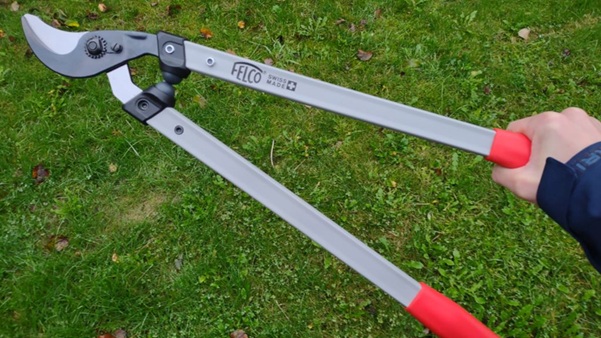How to Use Loppers for Efficient Cutting and Pruning

Maintaining a garden requires the right tools and techniques to ensure your plants stay healthy and thriving. Among the essential tools, loppers stand out as a gardener’s best friend for efficient cutting and pruning. Whether you’re trimming thick branches, shaping hedges, or removing dead wood, loppers can make the job easier and more precise. With the right approach, these versatile tools can save time and energy while helping you achieve a well-kept garden. In this guide, we’ll explore how to use loppers effectively, ensuring your gardening tasks are both efficient and rewarding.
1. Understanding the Basics of Loppers
Loppers are long-handled pruning tools designed to cut branches that are too thick for pruning shears but not large enough for a saw. They typically have two main types:
- Bypass Loppers: These have a scissor-like mechanism, ideal for clean cuts on live branches.
- Anvil Loppers: These feature a single blade that cuts against a flat surface, suitable for dead or dry wood.
Each type serves specific purposes, making it important to choose the right loppers for your task.
2. Selecting the Right Loppers for Your Needs
The effectiveness of your cutting and pruning depends heavily on selecting the appropriate loppers. Consider these factors:
- Blade Material: Opt for high-carbon steel blades for durability and sharpness.
- Handle Length: Longer handles provide more leverage but can be heavier. Shorter handles offer greater control in tight spaces.
- Cutting Capacity: Check the maximum branch diameter the lopper can handle.
- Ergonomic Features: Padded grips and lightweight materials can reduce hand fatigue during prolonged use.
Investing in quality loppers ensures smoother operation and less strain on your hands and arms.
3. Preparing for Pruning
Before diving into your pruning tasks, preparation is key. Follow these steps to get started:
- Inspect Your Loppers: Ensure the blades are sharp and free of rust. Dull blades can crush branches instead of making clean cuts, which can harm the plant and strain your hands. Tighten any loose screws or bolts to prevent accidental mishaps during use.
- Wear Protective Gear: Use gloves to protect your hands from splinters and thorns, safety glasses to shield your eyes from debris, and sturdy footwear to avoid slips or injuries.
- Plan Your Cuts: Walk around your garden to identify which branches need trimming. Pay close attention to crossing, dead, or diseased branches that could harm plant health.
- Clean the Blades: Wipe the blades with rubbing alcohol or a disinfectant solution before and after use. This helps prevent the spread of diseases between plants, ensuring your garden remains healthy.
- Choose the Right Time: Prune in the morning or late afternoon, when plants are less stressed by heat, and avoid wet weather, which can make surfaces slippery and increase the risk of injury.
Proper preparation ensures your pruning session is efficient, safe, and beneficial for your garden.
4. Proper Cutting Techniques
Using loppers effectively involves mastering the right cutting techniques. Here’s a step-by-step guide:
A. Positioning the Loppers
- Open the loppers fully to maximize leverage.
- Place the branch as close to the pivot point as possible for easier cutting.
B. Making the Cut
- For live branches, use bypass loppers to make a clean, angled cut. This minimizes damage and promotes healthy regrowth.
- For dead wood, anvil loppers are more efficient and require less effort.
C. Avoiding Common Mistakes
- Do not twist or force the loppers if the branch doesn’t cut easily. Sharpen the blades or use a saw for larger branches.
- Avoid cutting branches near the tips of the blades, as this reduces leverage and can damage the tool.
5. Maintaining Your Loppers
Proper maintenance ensures your loppers stay efficient for years to come. Follow these tips:
- Clean After Each Use: Remove sap, dirt, and debris using warm soapy water and a cloth.
- Sharpen the Blades: Use a sharpening stone or file to keep the blades sharp and effective.
- Lubricate the Moving Parts: Apply a light oil to the pivot point to ensure smooth operation.
- Store Properly: Keep loppers in a dry place, away from moisture, to prevent rust. Consider using blade covers for added protection.
6. Safety Tips for Using Loppers
While loppers are relatively simple to use, safety should always be a priority:
- Check the Surroundings: Ensure there are no obstacles or people nearby while cutting.
- Use Both Hands: Always use both hands to maintain control and avoid strain.
- Keep Your Balance: Work on stable ground to prevent slips or falls.
- Prune at the Right Time: Avoid pruning during wet or icy conditions that could make branches slippery.
7. Practical Applications of Loppers
Loppers are versatile tools with a range of applications in gardening and landscaping:
- Tree Pruning: Trim small to medium-sized branches to promote healthy growth.
- Hedge Shaping: Use loppers to maintain the shape and size of hedges.
- Removing Dead Wood: Clear away dead or diseased branches to enhance plant health.
- Harvesting Fruits: Loppers can help you reach and cut fruit-laden branches without damaging the tree.
8. When to Use Loppers vs. Other Tools
Knowing when to use loppers instead of pruning shears, saws, or hedge trimmers can make your work more efficient:
- Use loppers for branches that are 1-2 inches in diameter.
- Opt for pruning shears for smaller, thinner stems.
- Choose a saw for branches thicker than 2 inches.
- Hedge trimmers are better suited for shaping and trimming foliage rather than cutting
9. Troubleshooting Common Problems
Even with proper care, you may encounter issues while using loppers. Here’s how to address them:
- Sticky Blades: Clean the blades thoroughly and apply a non-stick spray.
- Rust Formation: Remove rust with a wire brush and apply a protective coating.
- Difficulty Cutting: Sharpen the blades or check if the branch exceeds the lopper’s cutting capacity.
- Loose Handles: Tighten any screws or bolts to ensure the tool is stable and secure.
Conclusion
Loppers are an indispensable tool for anyone looking to maintain a beautiful and healthy garden. By selecting the right type, mastering proper techniques, and committing to regular maintenance, you can make your pruning tasks efficient and enjoyable. Whether you’re an experienced gardener or just starting, understanding how to use loppers effectively will help you achieve professional results in your garden. Embrace this versatile tool and watch your outdoor space flourish with well-manicured trees, shrubs, and plants.





